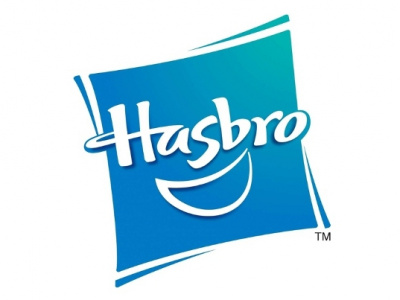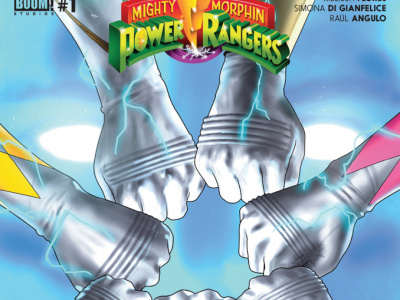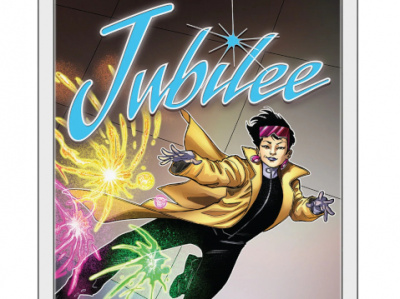At the San Diego Comic-Con International in July, we sat down with DC Comics President and Publisher Paul Levitz, joined by Vice President Direct Sales Bob Wayne, and conducted this extensive three-part interview. In Part I, we talked about the state of the comic market in comic stores, book stores, and the newsstand channel (see 'Interview with DC Prez Paul Levitz, Part I'). In Part II, we talk about the impact of movies on comic sales, and about DC's aggressive move into importing European material into the U.S. this year. In Part III, we talked about how comic stores can share in the growth in book format comic sales, and about the challenges facing the market (see 'Interview with DC Prez Paul Levitz, Part III').
DC's got a movie opening this weekend. We're curious what you're seeing in terms of the impact on sales of paper products.
Levitz: I think the connection between the Catwoman film's creative and most of our publishing program is so tenuous that I'd be shocked if there were any direct connection on anything beyond the movie adaptation. We put out one trade paperback, Nine Lives of the Feline Fatale, to tie in with it. We'll sell a few of those. I don't think you'll see anything much more than that.
When we get to Batman Begins next year, I think that will be really interesting. Constantine will be very interesting. That's a movie that will, in some ways, have the potential to have the same effect the first Batman movie had in that people will not have seen anything like it, and they may come out of it and say, 'This is cool! You mean this comes out of comics? Maybe I should check out some of these.' That may drive people in an interesting way.
Wayne: We did the Catwoman movie adaptation as a periodical. We also did the trade paperbacks with some other Catwoman stories in the Nine Lives book to get some other play. We have three SKUs, two that are primarily in mass, all three for direct. The numbers have been relatively modest, kind of the top of the middle range based on what we've shipped out so far in direct in orders and reorders.
The ripple on something like League started six months before the movie was supposed to open. The Constantine stuff is going to be an interesting thing for us to try to work because the buzz on Constantine has been getting better and better each time. Now that we've had people who have seen big chunks of rough cut, they're enthusiastic. That's going to be really a lot of fun to watch.
Levitz: It's not only going to be a really good movie, but a really good movie that's a good representation of what you should come to the comic book to get. This is something we haven't had for a while.
A closer connection than Catwoman to the base product.
Levitz: And we've never had the flavor that Vertigo represents. The good comic book movies to date have been about the superhero characters. Road to Perdition didn't really count because it didn't lead to any body of work beyond the adaptation itself because you didn't know what else to look for.
Or From Hell or American Splendor.
Levitz: Right. They were both kind of sui generis. This is something where if you like it, we've got a lot of stuff to sell you and that's an exciting possibility.
Heading in a different direction, how many trade paperback SKUs do you have in print?
Levitz: Total? Six hundred?
Wayne: Seven hundred.
Do you have the biggest line out there?
Wayne: I would assume so. The report we get has the book products, and also has the DC directs with the key inventory assignment Star system, all the stuff from Diamond, a lot of it's on one report. I can't do an Excel file sort in my head but I think that's about the range.
Levitz: I would assume they may have some of the real small publishers who print in small enough batches that they've got a carton of something sitting there for a hundred years so the number of titles has accumulated up. But if you're talking in terms of a program where you manage it to keep titles in print, I don't think there's anyone who comes near us. I think just looking at the number for the first half of the year, we had done something like seventy additional printings of titles.
Wayne: For the first half of the year, we're almost at what we were doing two years ago for an entire year, in going back to print. It's a really dramatic increase in our managing inventory, how often we're going back to press, how we're staging it to have the minimum disruption in the supply chain. We're pretty pleased about that.
Let's talk a little bit about your European material licenses. We're not the only people to observe that the market seems to be moving toward Asia, and DC is going toward Europe to acquire intellectual property. How do you respond to that observation?
Levitz: We're moving toward any pole that has interesting material in it. CMX is a much larger commercial opportunity for us than either Humanoids or Rebellion because clearly the presence of manga in the marketplace is now a very significant percentage of the broadly-defined comics sold in North America. The lessons to be learned from manga include that how you present material and where you make it accessible helps define whether or not it can find an audience that isn't there already. It's not exactly brain surgery, but it's the first important evidence we've had of that in a very clear way in our business, even if we had intuited that all along.
You could call it the Tokyopop Lesson.
Levitz: I give them a lot of props for what they've done in that area. Stu and John have done a lot of terrific stuff. When you look at a creative space like the European graphic novel and say, 'This has worked really well in its native market for four, five decades, but we don't have an American audience of that flavor right now in any appreciable numbers. Is there a way of connecting it to an American audience and seeing if the American audience will respond?' You look at the stuff and the first thing you say is as it's been brought over to date, it's generally been left in a format that's not particularly friendly to the retail environment here.
Is it the price? The size?
Levitz: Price, trim-size, spine size, page count, value proposition which is a combination of price and format).
Like a 96-page magazine-sized or larger trade paperback for $15.
Levitz: Or a 48-page. The European albums were built in 48s. They do a 48-page hardcover for $20. I don't think anyone's trying to gouge anyone, but that's a lousy value proposition by American standards. And they produce it so for the shelf where it could get display in most of the environment, someone would have to go to that corner of the store to get it. And the store would have to really want to stock it. It's our hope that by reformatting it into a better price/value proposition, more comfortably shelving it, doing a little marketing effort to bring peoples' attention to it, putting through it our distribution methodology, it should improve the number of retailers trying the material because of their working relationship with us. There's a good story, I'll let Bob tell it, from Mitch Cutler...
Wayne: St. Marks has carried a wide variety of stuff. Being a Village store, you'd expect a very wide, deep stocking of stuff, but they've never really been tremendously successful with the Humanoids material. It's always been, 'Okay, it's here. We've got this size.' They placed what they thought was an aggressive order for the first of the Humanoids list to come through, the Techno-Freaks, and put it on the shelf, and called us later that same Wednesday because they needed more. They had sold all their copies. My assumption being that if there's any place on the East Coast where you can find the previous attempts in English or French albums, it's probably in Manhattan. For a guy who's been doing stuff as long as Mitch, to be able to move that many copies in one day just because it was in the size and shape closer to what people were used to, and the price was friendlier,... People were just jumping in and getting this.
We've had a few other people that have also said that they've done much better than they expected, and 'We hope you guys are going to have some for reorder...' Well, we'll have some for reorder. We'll go back to press if the demand continues to be really strong. We'll ride along and see what happens.
The guys from Humanoids are really pleased with the initial feedback we're getting, and the guys from 2000 AD are very happy just to hear about the stuff with the Humanoids, because we've got them swapping places back and forth handing out samples and shilling upcoming books. It's been a pretty positive thing, so far.
Levitz: To return to your framing of it as Asia versus Europe, I don't think there's any opposition between the principles. The core principles should be us reaching out to bring as much good stuff to our readers as our readers are interested in having. We'll continue to look for opportunities.
I think you announced three titles a month each from the two European lines. That's an aggressive release schedule, not in terms of the amount of property that's out there, but in terms of the market and trying something new. Why did you choose that number?
Levitz: It's somewhat arbitrary. In the course of discussions back and forth between the publishers and what their aspirations were, looking at the list to see how many products were available that were suitable for transition... Part of what you want is to do enough to convince retailers that you're serious and that they should put some support behind it. Part of it is that each of these deals requires building a slightly different infrastructure, a different set of translators in the case of the French material, a different set of page size adjustments for each. It's not a heck of a lot more work to do three than it is to do two. You're not creating more editorial material; this is all pre-existent editorial. You try and guess at what's enough, so that you're clearly putting your foot in the water as opposed to your toe in the water.
Earlier, you were talking about the pocket crunch at bookstores. How does that situation play for the European titles? Are you expecting that to be a major channel?
Levitz: I don't know if I'd go to 'major,' but I would hope it's a channel of opportunity. Particularly on the Humanoids material, it's never really had any decent distribution in that marketplace. We're dealing with a more diverse range of potential consumers. It's possible we'll have a lightning strike there and people will say, 'Oh, this isn't like any flavor I've got before, I like fudgesicles.'
I'd like to make one other point. For us, we can do fairly significant programs with this stuff without it being a giant bet. These things really fit how we do business. If you're not set up to keep a catalog in print, if you're not set up to market across a broad range of material, then projects like this are petrifying. For us, the difference is just in the flavor of the content, but the process tools are 80-90% similar. The only real difference is in the preparation of the material. That makes it easier for us to move in than a lot of our competitors.
Wayne: Especially, the inventory management stuff is identical to figuring out what the formulas are and when to go to back to press. It falls into a pattern of just a little bit of incremental additional work for the first new dozen, as opposed to starting something from scratch, having to learn how to do that and master that skill set. You're going to make a lot of mistakes while you're figuring out how to do it.







